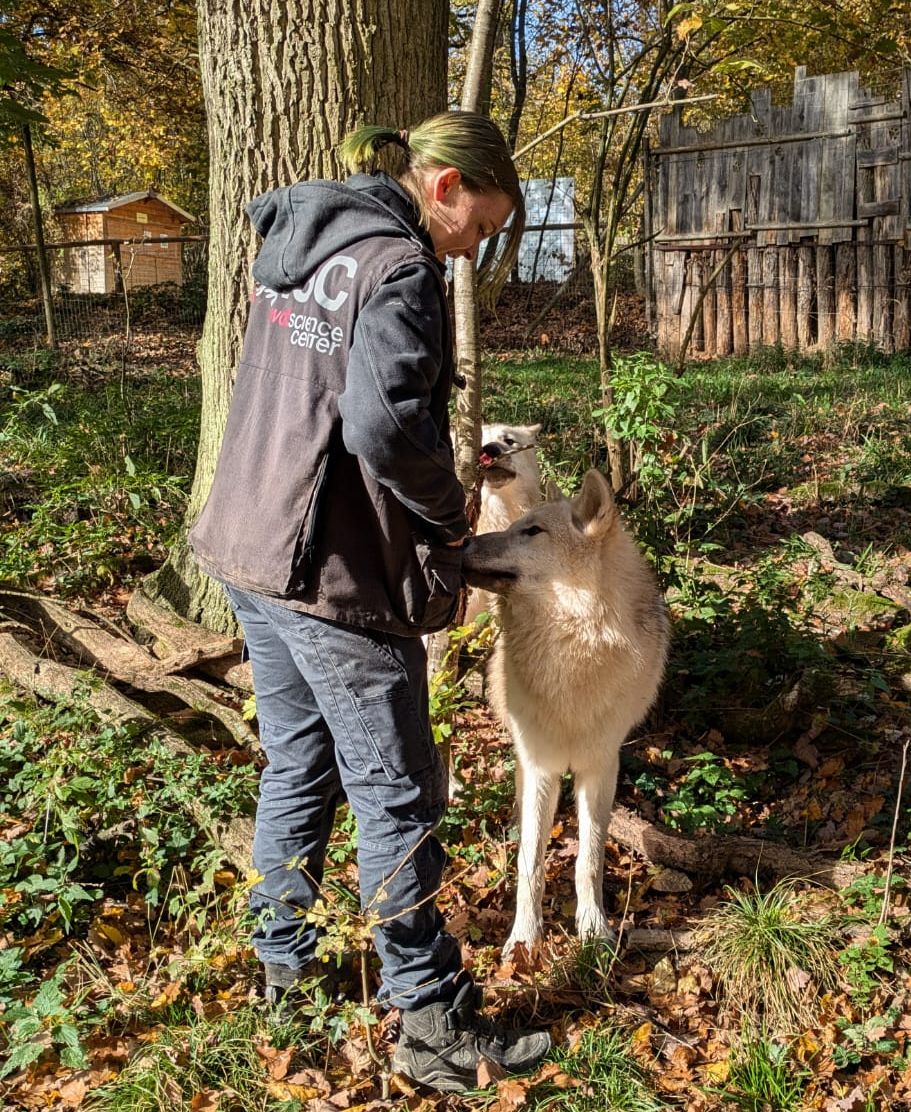Breath
Emily Abt (Animal trainer trainee)
07.04.2025

In September 2024, I started as a trainee at the CF-WSC. As a trainee, you have the opportunity to build and strengthen a relationship with the animals at the WSC.
I was fortunate enough to be part of the wolf pup rearing process from the very beginning in 2024. Although the wolves know you from the start, it takes time and patience to build a real bond. One has to grow together, gain first experiences, and face new and challenging situations.
In these moments, it’s especially important to remain calm – a task that is often easier said than done. Fortunately, you’re not alone on this journey. A wonderful team is by your side, offering valuable support with their experience. In these moments, you often hear the encouraging phrase: “Breathe.”
This phrase has a deeper meaning that becomes clearer when you understand the relationship between breathing and stress. When we find ourselves in a challenging or exciting situation, our sympathetic nervous system is particularly active. It releases adrenaline and cortisol, preparing the body for fight or flight. The result: We breathe faster, our heart rate increases, and our muscles tense up.
But here’s where conscious breathing comes into play: When we breathe more slowly, our parasympathetic nervous system is activated. This means the body shifts into rest and recovery mode. Breathing and the nervous system are closely connected. When the brain sends stress signals, we breathe faster – but when we consciously slow down our breathing, the stress signals decrease.
By breathing mindfully, we can collect our thoughts, focus better, and waste less energy on unnecessary thought loops. Overall, breathing is a simple yet highly effective way to find calm and composure in stressful moments.
In working with animals, breathing is just as essential. If you remain calm and breathe consciously, you can not only calm yourself but also provide a sense of calm and safety to the animal. Animals sense our energy, and through our own calmness, we can help them relax and respond better in challenging situations.
But breathing is not only useful in working with animals – it can also be a great help in everyday life. The next time you feel stressed or are facing a difficult situation, remember this simple but powerful tip: “Breathe.”